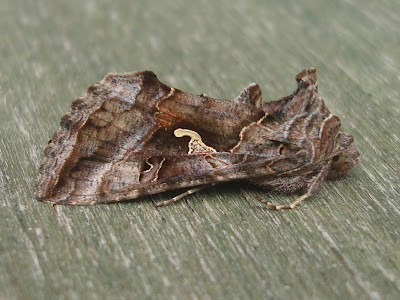
The country park has been basking in some late September sunshine over the last few days. Despite having some rain during August, the ground has dried out a lot since then. The grass on the park in many places is looking parched and in the picture above the grass is more brown than green in colour.
A thick mist covered everywhere first thing on Tuesday 27th and after a sunny spell, a sea fog rolled over the Island in the afternoon. Not much to report for today.
There was no wind on Monday 19th with plenty of sun and good visibility. Scanning the mudflats at the end of the day revealed 18 brent geese on the mud at the mouth of the Colne estuary. Along the edge of the mudflats were 200 feeding avocets, while offshore 5 common terns were seen. One mudflat pool had 6 little egrets feeding in it.
On the pools in the park grazing fields were 25 wigeon, 100+ teal, 5 shoveler, 30 mallard with 15 greylag geese dropping in to roost in the evening. The female ruff (a reeve) was present again for it's fifth day, feeding along a muddy edge, also 10 snipe and 10 black-tailed godwits also present.
The park pond was a bit quieter on Monday with only 30 mallard present although their numbers have been over 100+ birds. The swan family seem to come and go between the dyke and the pond with the two cygnets following behind the mother.

The bushes between the hide and the car park often hold a variety of small birds with chiffchaff, blackcap, chaffinch, greenfinch, goldfinch, great tit, blue tit, long-tailed tit often seen. A couple of goldcrests have been mixed in with the tits for the last fortnight or so. Martin Cock had the rare sight of two yellowhammers briefly on bushes in this same area on Monday. A reed warbler was heard calling from the pond hedgerow on Sunday.
Not many migrants passing over the park during the sunny Monday although 50+ swallows seemed to be flying around the fields and houses just to the north of the park. Two siskin flew over the park on Sunday calling and a lesser redpoll too.
On Saturday, 2 brent geese were in the fields, 2 yellow wagtails were with the cows, 70 curlew roosted at high tide here. Two wheatears were at the Point with another on the seawall, while 30 linnets fed in the sea-blite bushes at the Point. On the mud 140 avocets roosted in a group ahead of the high tide and a distant marsh harrier was seen over Langenhoe. A common seal and 3 eider were just offshore from the park on Saturday morning.
Martin Cock and Steve Entwistle saw a common buzzard over Maydays farm on Saturday, while the next day 4 red-legged partridge were seen in the field behind the Strood reservoirs on Sunday. A Mediterranean gull flew over the East Mersea road near the church along with a number of other gulls circling over the fields on Monday.
A badger was seen scuttling along the side of the pond at dusk on Monday night and then an hour after dark one jogged along Bromans Lane ahead of the car.
On Sunday a small copper and small heath were some of the small number of butterflies at the park along with red admiral, speckled wood and small white, while the day before a grass snake and two adders were out basking in the park. Martin Cock noted a hummingbird hawkmoth along the path near Gyants Marsh on Sunday and another one was reported in West Mersea on Monday.

The moth trap was set out in the light drizzle on Monday evening and on Tuesday morning 95 moths of 18 species were noted. This barred sallow in the photo above, is a frequent autumn visitor to the trap with this individual being the first of the season.

A rather unexpected discovery was disturbing this very worn herald moth, found while mopping up the floor of the park toilets. In the past the herald moth has been seen in the autumn resting inside the building, as well as individuals coming to the moth trap in the spring.

Two beaded chestnuts were the first of the season, one pictured above. Other moths included frosted orange, dusky lemon sallow, sallow, orange sallow, rosy rustic, square spot rustic, snout, black rustic, deep brown dart, broad-bordered yellow underwing, brindled green, lunar underwing, brick, large yellow underwing and flounced rustic.














































